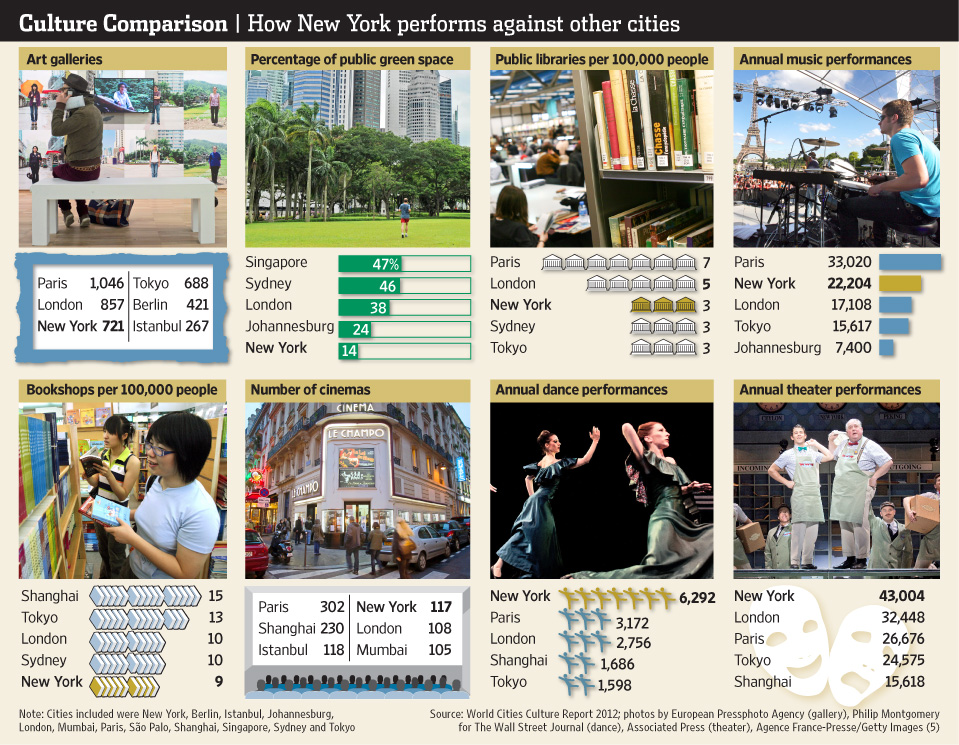From The Wall Street Journal News Graphics feed comes this illustration of how New York City ranks culturally to other major world cities.
GIA Blog
From Kathleen Massara at The Huffington Post:
A new session has been added to the 2012 Web Conference Series to discuss the new K-12 Arts Education Policy Agenda being worked on by the GIA Arts Education Funders Coalition (AEFC). GIA formed the AEFC in the spring of 2012 for funders concerned with arts education. One of the purposes of the group is to investigate ways to embed the arts into current federal education policy. Working with the Penn Hill Group, an education policy firm in Washington, DC, the coalition's Advisory Committee has created an agenda that encompasses several opportunities for arts education.
From Elizabeth Day at The Guardian:
From Joseph Stromberg at Smithsonian.com:
From Marianne Combs at Minnesota Public Radio:
New research by the Center for Effective Philanthropy (CEP) shows that when it comes to social media, nonprofits aren’t closely following their foundation funders or their funders’ staff. “While foundations and their grantees are both using social media—Twitter, Facebook, YouTube, and blogs—the nonprofits simply are not following their funders,” said Ellie Buteau, vice president of research for CEP and co-author of the report.
From Micheline Maynard at Forbes:
What do you think the general public thinks these days when they hear the words “the arts?” Does it conjure up images of what they do on a daily basis: listening to music, watching television, singing in church choir, reading a book, attending the theatre? Or do most people think of an elite special interest group for people with money? I’m thinking about language again because it gets us into so much trouble.
The University of Chicago Cultural Policy Center has published Set in Stone: Building America's New Generation of Arts Facilities, 1994-2008. This study of cultural building began in 2006 as a response to inquiries from arts consultants who had for some time been working on dozens of building projects across the country and found themselves confronting the same sets of problems with each new client.

